Who needs such weapons?
In the near future, the Pentagon plans to deploy a whole family of newest exotic weapons systems. Skeptics argue that the lion's share of these expensive toys is focused on waging the wrong war that may actually occur.
The strike will be delivered without delay and become fatal. DD (X), American destroyer fleetcapable of launching 20 artillery shells in less than a minute. On approaching the ground at a speed of 1330 km / h, these satellite-guided missiles will change their trajectories, and all 580-kilograms of landmines will crash to the ground at the same moment, turning everything around into garbage and dust. If this firepower seems insufficient, the destroyer has in stock 80 more ammunition, as well as 14 Tomahawk missiles. After the strike is complete, the ship will simply disappear. On the radar screens, the hull of the stealth destroyer DD (X) - a ship with a displacement of 000 tons - will look like just one of the fishing boats that threw their nets into the sea.
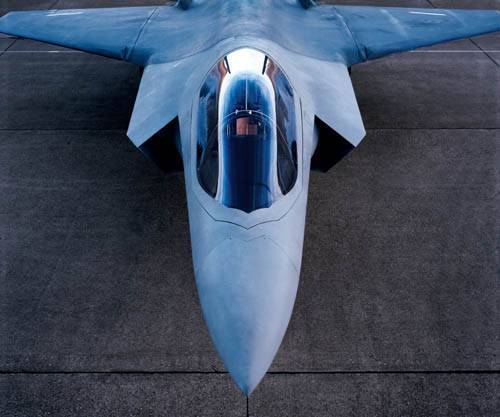
F-35 Joint Strike Fighter
Appointment: stealth strike fighter. Key Features: Sensitive sensors are the first to detect enemy radar. Cost: $ 256 billion (over 30 years). Commissioning: 2012. Anti-terrorist operations: replacing obsolete shock aviation and air support aircraft. The Great War: the suppression of air defense systems.
The main US military target has already been defined. “Our country is embroiled in a global war on terror that threatens the security of every American,” George W. Bush said. "On the way to the goal, we use all our national power." Fighting for victory will have more than one decade. Bush compares this war with half a century of opposition to Soviet communism. The Pentagon has assigned the name of this campaign - "Long War". In this context, Iran and Afghanistan appear only as the first steps on this path. From this it could be concluded that the Pentagon’s 70 billion-dollar annual budget, which should be spent on developing new weapon systems, will be targeted to win the war against terrorists. However, if you look at the arsenal that is being created now by the Pentagon, completely different conclusions come to mind. Take at least the destroyer DD (X). If you listen to critics, using it in the fight against terrorists will remind you of an attempt to crush ants with an 18-wheeled tractor.
Inside the defense department there are competitors to the idea of a “long war”. For many, a lifelike China seems to be a real threat. But to contain it, completely different means are required than to defeat al-Qaida - this is more appropriate. weapon, created in the era of the Cold War. About $ 10 billion per year is spent on ballistic missile interception systems, which were originally created to counter Soviet strategic missiles.
$ 9 billion for new-generation fighter attack aircraft designed to counter MiGs. $ 3,3 billion for new Tanks and combat vehicles, $ 1 billion for the modernization of the Trident II nuclear missile and $ 2 billion for the new strategic bomber.
Of course, the new strategic line does not overlook those who will fight in the “long war”. It is intended to increase the number of special forces and robotic combat vehicles. Most of the approved for the production of military equipment is only indirectly related to the terrorist threat. This is not surprising. The larger the new weapons system, the more supporters it has and the harder it is to stop its deployment.
All this military equipment is insanely expensive - so, the destroyers DD (X) with a series of 7 units will cost $ 4,7 billion for each. It follows from this that the “long war” program and the program of opposition to China should be based on the same weaponry. Critics of such a line say that dispersion of forces will not allow the country to act effectively in a “long war”. New York Post military commentator Ralph Peters writes: “Now that the army and the marines have laid the heaviest burden to protect our national security, the Pentagon proposes to reduce the number of soldiers and buy expensive high-tech toys instead, which are difficult to find use.”
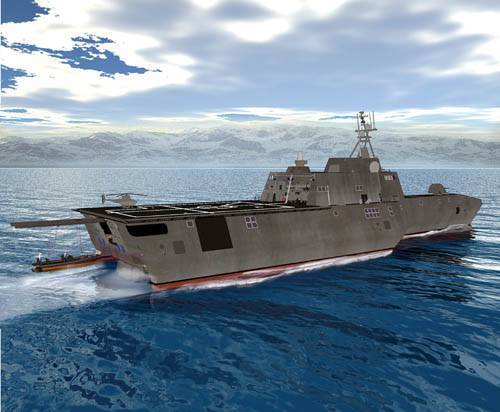
Littoral Combat Ship
Purpose: fast and flexible warship for action in shallow water. Key feature: quick-assembly modules for underwater sabotage activities, cleaning of the water area from mines and combat at sea. Cost: $ 22 billion (over 12 years). Commissioning: 2007 year. Anti-terrorist operations: the pursuit of partisans operating on the sea in the coastal zone. The Great War: the hunt for Chinese diesel-electric submarines.
Mistress of the seas
Creating any element of military equipment, you are involved in a gamble - trying to predict what the war will be in a very distant future. Military shipbuilders take on their conscience a heavy burden - after all, they need to look into the most distant perspectives. Only one design of a ship for the battleship class may require ten years, and being launched, such ships must sail for half a century. The main function of the navy - the struggle for supremacy over the blue waters of the vast open ocean - disappeared with the disappearance of the USSR. Today, American ships are preparing for war on the littoral, in coastal waters. There is only one consent - whose coastal waters will it be? And what should they do there? Perhaps, to smash the guerrilla harbor, carrying out separate stages of the campaign against terror. Or maybe it will be serious fighting off the coast of China or Iran. For Captain James Syring, who is in charge of the development of the project DD (X), the goal is to build a multipurpose destroyer capable of performing almost any operations at sea. The dual-band radar destroyer system will be 15 times more efficient than the current ones, and the electric motors will help to move fairly quietly, while remaining unnoticed by the enemy’s submarine fleet.
Rear Admiral Charles Hamilton, Chief of Sayring, points to an almost imperceptible console sticking out of the stern of the destroyer. This console with a small slip is made so that the "seals" were comfortable to slide into the water. Next, they must quietly make their way into the enemy’s territory and adjust the precision fire strikes from the main destroyer caliber. The accuracy of firing cannons is such that spotters, having occupied one of the houses on the enemy’s territory, can cause fire on neighboring houses, and after a salvo change shelter. “We’ve been thinking about a scenario in which events took place in Mogadishu,” says Siring, “DD (X) is calculated so that in such a situation around ′ our ′ could create an impenetrable ring of fire.”
However, Pentagon consultant Thomas Barnet views this destroyer as a relic of the Cold War era. “Why,” he asks, “cram all possibilities into one huge, expensive project?” ′ Seals can be dropped from ships three times smaller and 500 times cheaper. ”
Today, terrorists can be considered a serious threat. But after 15 years, and such a period is required for the development and construction of the destroyer, the “long war” may already end. “If we direct all of our attention to the GWOT,” Hamilton uses the abbreviation used by the military to mean “global war on terrorists,” our rapidly developing neighbor can in the meantime grow up his nationalist ambitions. ” The strategic report already mentioned states that China has “enormous potential for military opposition to the United States.” The guidance documentation for the navy indicates how far DD (X) can reach the Yellow Sea - right up to the coastal shoal on the east coast of China.
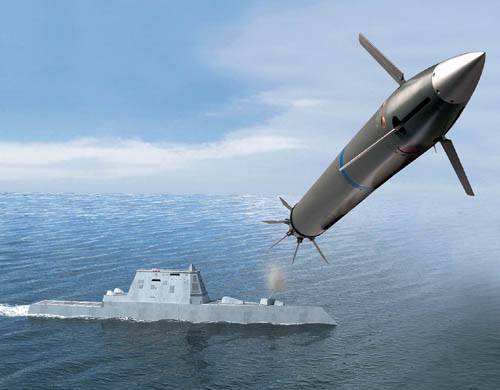
These ships do not have giant super-guns, but they will no doubt be more useful than super-expensive destroyers to fight terrorism.
Modular model
It is necessary to leave the conference room Sayringa with his materials on the destroyer DD (X) and cross the corridor - before you open another view of the world. Captain Don Babcock manages the development of a whole family of new LCS ships ("littoral warships"). They do not have giant super-guns of a geopolitical scale, but for a real fight against terrorists, they will surely be useful.
Their speed (80 km / h) is about 50% higher than that of DD (X), they are well disguised, special gates at the waterline level make dumping overboard saboteurs like “sea fur seals” easy and safe work. And finally, each of them with all the stuffing costs $ 400 million, which is ten times cheaper than the new destroyer. The Navy can rivet dozens of such boats and put them in all corners of the ocean. This will be a quick and prompt response to an equally mobile threat. For about a decade, the military want to get 55 of such 3000-ton ships - this will be about 1 / 6 from the total number of the Navy.
Unlike DD(X), LCS is not going to target thousands of different operations. Each ship will be engaged in a specific task - hunting for submarines, removing minefields or fighting single opponents. Each LCS initially enters service with a crew of 40 and a basic weapon set including a 57mm cannon and a missile interception system. Then the vessel is understaffed for a specific task. For this, "target modules" are used - standard 12-meter cargo containers. They have sonars for hunting submarines, and unmanned helicopters for combat operations on the surface of the ocean, and Robots for neutralizing min. If the destroyer DD(X) can be compared to a Swiss army penknife with many different blades (albeit weighing 14 tons), then the comparison with an electric drill is more suitable for the LCS, on which you can attach many different nozzles. As Babcock says, "it's time to radically change course."
Decision makers at the top also agree with the time-consuming changes. True, the outlines of the basic LCS model are still vague: it has not yet been decided which is better - a muscular high-speed boat or an 125-meter trimaran.
In any case, no one is thinking of abandoning the very idea of a ship of the future, which can be rebuilt in the course of the emergence of new tasks. If the gangs of terrorists begin to actively explore the sea, such a ship will receive more guns and, say, a room for prisoners. If the threat from Chinese diesel-electric submarines becomes real, then LCS will be quickly re-equipped to wage war in the depths of the ocean.
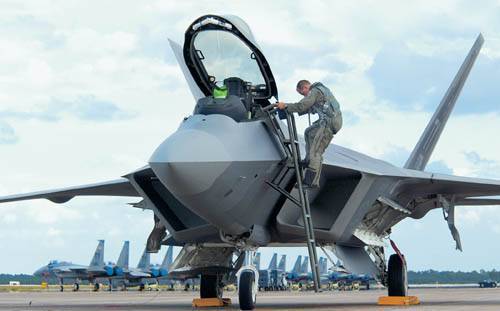
F-22 Raptor
Purpose: the next generation fighter. Key features: high maneuverability, supersonic cruising speed (1,5 mach). Cost: $ 61,3 billion (over 23 years). Commissioning: 2006 year. Anti-terrorist operations: supersonic jammer. The Great War: Fighting the latest models of Chinese MIGs.
Air superiority
The JSF program (Joint Strike Fighter fighter jets) is the exact opposite of the strategy from which the LCS concept was developed. Instead of creating specialized weapons for each specific threat, the Pentagon hopes with a single fighter to satisfy all the demands of tactical aviation for decades to come. At the same time, they mean even the fighting of a “long war”. However, the use of fighters for bombing partisan bases makes sense only if the price of the aircraft is low and their number is large enough. Sending a single-engine JSF worth $ 60 million to suppress only one Chinese radar is an unjustified waste of money. What to say about the use of a twin-engine aircraft worth $ 250 million to suppress a saboteur’s radio communication with a homemade mine buried somewhere along the road? Moreover, radio jamming systems mounted on “Hummers” cost $ 10 000 and do their job well. In this case, the mentioned functions of radio suppression remain one of the main arguments of Lockheed in favor of mass production of F-22 Raptor aircraft. For deliveries of these devices to the Air Force, the company has $ 4 billion each year. This plane was created for fighting with the Soviet MiGs, and for 15 for years he has been looking for a worthy occupation. Retired Major General Tom Wilkerson, who once flew an F / A-18, thinks that Raptor and JSF are a clear bend: “Why start building from scratch,” he asks, “if F / A-16 fighters , equipped with new electronics, quite good? New aircraft will simply have no one to fight. ”
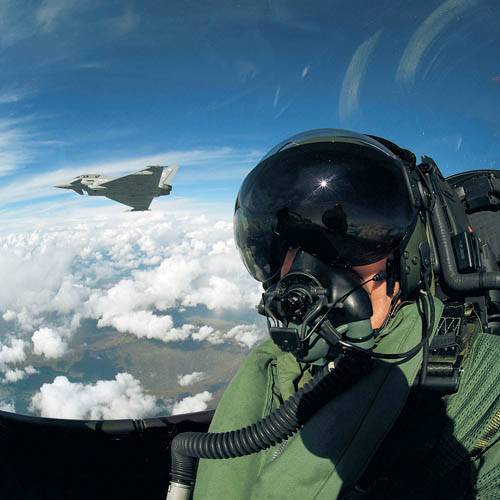
The F22 Raptor aircraft is more invisible than the F35 JSF, which is no more visible for radars than a metal ball the size of a ping-pong ball.
Weapons of the future
On the battlefields of the “long war” the work of soldiers and sailors is becoming more and more expensive. The cost of equipment per American soldier took off from $ 2000 during the Vietnam War to $ 25 000 today. The Army’s infantry weapons program, devouring $ 3,3 billion each year — the so-called Future Combat System (FCS) — offers a bunch of useful things for the “long war” fighters. Here are the latest night-vision goggles, and improved body armor, and robotic "mules" for transporting equipment, and sensors that can be left on the ground so that they would spy on the enemy for days on end and send messages to "their" radio network.
The most expensive element of the FCS program remains the modernization of the current fleet of heavy vehicles - tanks, howitzers and other combat vehicles, which are usually not used in battles with insurgents. At the same time, the design of the “Hammer” of a new generation was stuck somewhere in the initial stages, a new series of radio transmitters did not reach the battlefield, and the development of a new combat uniform was several years behind the schedule. During the 20-year development of the FCS program, the cost of it was inflated from the planned $ 93 billion to the current $ 161 billion. Most of the above-target costs were allocated to those weapons systems that are least applicable in the war on terrorism.
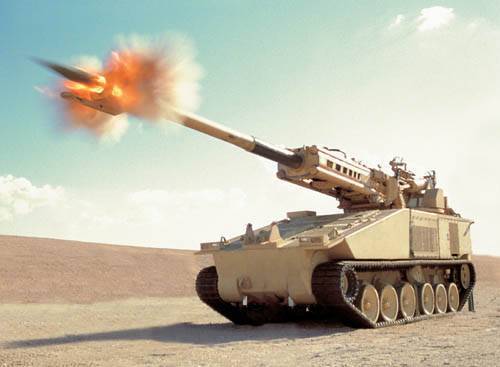
Future Combat Systems (Future Combat Systems)
Purpose: major army operations. Key features: a wireless communication network between infantry, artillery, sanitary units and robots. Cost: $ 161,4 billion (over 20 years). Commissioning: 2010 year. Anti-terrorist operations: robots to detect insurgents, better communication between units. Big war: more powerful guns, faster tanks, a system capable of crushing and destroying enemy armies.
Victory in the last war
Immediately after September 11, almost all disagreements about what kind of military equipment the United States needed disappeared. Congress did not try to save on defense programs. However, the stock of money is not infinite, and tomorrow's ambitious plans for military construction can undermine today's capabilities in the fight against terrorism.
In the strategic plans of the US military, it was announced that in the next five years, special forces units would receive more 14 000 fighters. At the same time, the total planned strength of the land army is cut by 30 000. In particular, this is done in order to save funds for the execution of the FCS program. 40 000 people will be fired from the Air Force, so even more money will be released on new fighters.
All these points, according to the consultant at the Pentagon Barnett, are complete nonsense, especially now that the US President and the Secretary of Defense continue to talk about the reorientation of the army to the global war on terror. Until an unequivocal political decision is made that one of the threats has absolute priority over the others, Americans will blow thousands of lives and tens of billions of dollars into the wind. “It’s time to adapt to the new world in which we now live,” says Barnet, “and we are already doing this, both at the level of doctrine and in practice. Only the idea of purchasing the most cumbersome weapons systems has too many supporters - those who are trying to revive outdated notions of war. ”
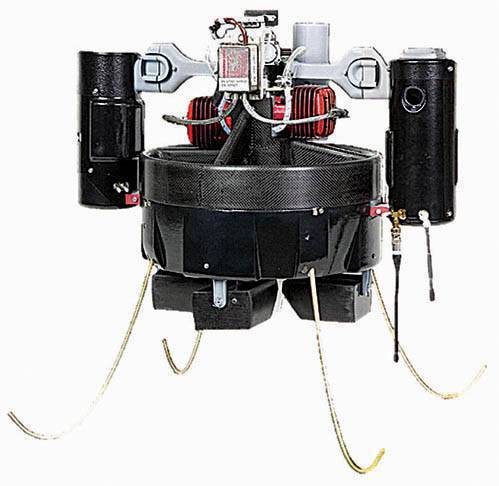
An unmanned aerial vehicle is one of the elements of the equipment of a soldier in a modern army. This radio-controlled model for reconnaissance and search for targets is launched from the hands and is able to hang in the air for an hour. Such a device should fit in a backpack soldier.
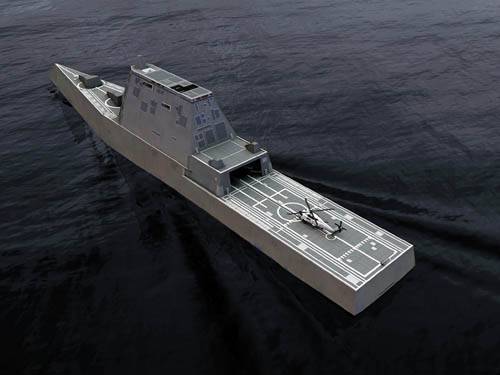
DD (X) Destroyer (destroyer)
Purpose: unobtrusive combat ship with a displacement of 14 000 tons. Key features: subtle body for enemy radar, long-range guns with satellite guidance. Cost: $ 34 billion (over 17 years). Commissioning: 2013 year. Antiterrorist operations: the landing of "fur seals", the suppression of the rebels from a distance of 180 km from the coast. The Great War: cover for the marines storming the coast.
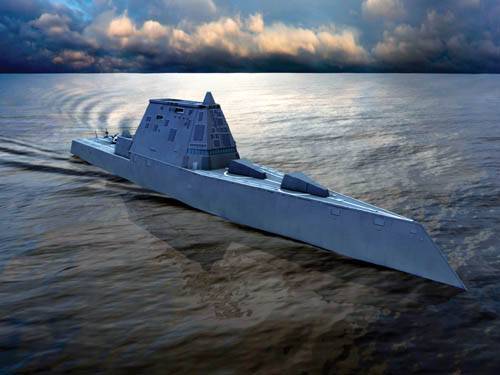
Using DD (X) to fight terrorists is the same as pushing ants with a super modern tank.
Information